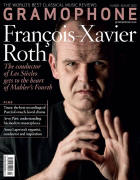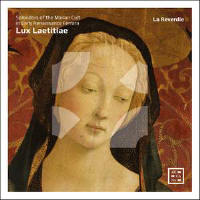Texte paru dans: / Appeared in: |
|
|
Outil de traduction |
|
|
I’ve not always been kind to La Reverdie, but one must salute the remarkable stability of their cast and approach over more than 30 years: reviewing this album feels like meeting old friends with whom one’s had the odd row but for whom one’s respect has grown with time. (Partly this is because I’ve witnessed what a strong impression they elicit in live performance.) This recording consists of repertory they have made their own, early-period Dufay, joined this time by Binchois and their elder English contemporaries, Dunstable and Power; and it all comes all from one source, the Ferrarese manuscript Modena MS ?.X.1.11. As always, the backbone of La Reverdie’s sound is the voices of the Caffagni sisters (Claudia and Livia) and Elisabetta De Mircovich, and the cornettist Doron David Sherwin. It’s worth emphasising that all six performers here sing and play at least one instrument. The blend of voices and instruments is skilful and homogeneous (try Dunstable’s Salve regina mater mire, or Dufay’s evergreen Alma redemptoris mater, which sports some lovely cornetto diminutions), any hint of the ‘kitchen sink’ aesthetic that seemed so problematic 25 years ago a distant memory. The softcentre, trippy vibe that’s always been there remains but everything is immaculately placed, the fruit of the experience of many years. That’s true with instruments on their own (Power’s Gloriose virginis Marie) or singing a cappella (as in Quam pulchra es – Dunstable again, and again consummately done). Changes in texture obscure the form of Power’s elaborate Salve regina setting, hence a momentary loss of focus. Whether voices and instruments together are the best way to present isorhythmic motets will continue to elicit debate but it’s hard not to admire the clarity of texture and form they bring, especially in the concluding piece,
Dufay’s Fulgens iubar. Yes, there are bells (there were always bells …), but in comparison, the approach of the Huelgas Ensemble or Cantica Symphonica appears heavy-handed at best, at worst just silly. A couple more such pieces wouldn’t have gone amiss, but one of the most impressive tracks of all is of Dufay’s Magnificat : functional, no frills, but polyphony sumptuously delivered. |
|




